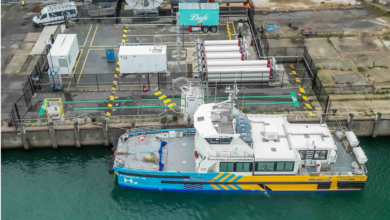ZeroAvia in four-party agreement to support hydrogen powered flight

ZeroAvia, the leader in developing zero-emission solutions for commercial aviation, announced a four-party agreement to develop commercial routes using its hydrogen-electric powertrain systems on routes from Skellefteå Airport in Northeast Sweden.
As part of the agreement, ZeroAvia will work with the airport, the municipal energy company Skellefteå Kraft and Braathens Regional Airlines to demonstrate flights and explore launching commercial operations.
Braathens Regional Airlines (BRA), one of the largest domestic operators in Sweden, plans to provide aircraft for future demonstrations and to explore commercial routes. The partners will examine the potential for operating a range of regional aircraft on commercial passenger routes using both ZeroAvia’s ZA600 powertrain, designed for 9–19 seat aircraft with a 2025 launch target, and it’s ZA2000, designed for 40–80 seat aircraft (such as ATR and Dash 8 families), with a plan for entry into service by 2027.
Braathens Regional Airlines currently operates 14 ATR-72 aircraft on routes across Sweden, Finland and Denmark and will in the coming month’s start-up charter flights operate 8 Airbus 319/320.
Skellefteå Airport is one of the ten largest airports in Sweden in terms of domestic flight operations. In conjunction with the partners, the airport will investigate the operational infrastructure required to support the hydrogen-powered flights and opportunities for further decarbonisation presented by green hydrogen.
Skellefteå Kraft has deep experience in renewable generation in the region, with hydroelectric power stations in operation and the Blaiken onshore wind farm as part of its portfolio. The energy company will analyze the potential for hydrogen production and supply as part of the project with ZeroAvia.
Hydrogen-electric propulsion promises lower operating costs and zero-emission flights for airlines, as well as reduced air and noise pollution around airport locations. These benefits can in turn mean greater use of regional air travel, increasing productivity and connectivity and providing a boost for regional economies.
